FAVOURITE FIVE CHURCHES
You’ve heard of the Famous Five – well, this is our Favourite Five! Totally unscientific and based on local knowledge, welcome to our Favourite Five series.
FAVOURITE FIVE CHURCHES
Churches have a special atmosphere all of their own – that sense of time, history and above all peace. And those on Romney Marsh are extra-special, perhaps because of the beauty of their setting.
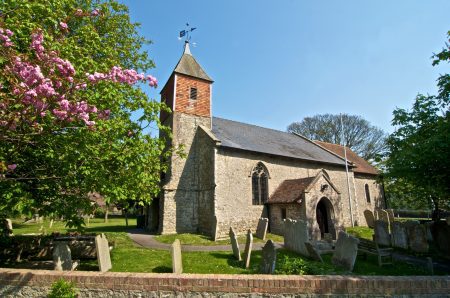
DYMCHURCH – ST PETER AND ST PAUL
Dating back to about 1150, this is a classic Norman medieval church which remained unchanged until it was extended in 1821.
You can still see the original carved Norman south doorway, west doorway and magnificent chancel arch. Carved on the walls – one in the porch and one on the outside south wall of the nave – are two medieval scratch dials – a very simple form of a sun dial, which was used to tell people what time services were.
St Peter and St Paul has an interesting history. The font was thrown out – by Protestant dissenters perhaps – and then restored in the 15th century after it was found in a ditch.
In the peaceful churchyard some grave stones are decorated with the skull and cross bones. Near the front of the churchyard is the grave of the marvellously named Solomon Pepper, whose name also appears in Russell Thorndike’s Dr Syn series of books. Nearby is that of Charles Keeley, a smuggler killed near the Ship Inn. His killer was midshipman Richard Morgan, later murdered by the Aldington smuggling gang in 1826.
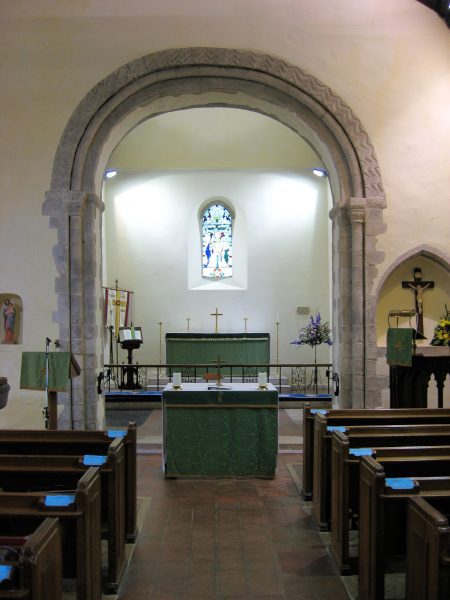
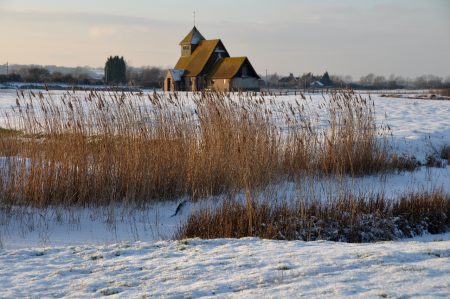
FAIRFIELD – ST THOMAS BECKET
This church is iconic – standing alone, surrounded by fields and waterways and sheep, it appears to float above its environment. Until a causeway was built in 1913 it was frequently surrounded by water during the winter and spring months.
There’s a legend behind the name as the church is dedicated to St Thomas Becket, who was Archbishop of Canterbury from 1162 until his murder in Canterbury Cathedral in 1170.
Originally built from timber and lath around 1200, it survived intact until the 18th century, when it was encased with brick and a red tile roof added. By 1912 it had deteriorated, and was rebuilt within the timber framework – fortunately visitors can still enjoy the beautiful Georgian interior which was left untouched.
Stepping inside is like going back to the 18th century, with rows of box pews painted white with black linings and a triple decker pulpit. The font is unique – it has seven sides, possibly representing the seven sacraments of the church.
St Thomas Becket’s unique qualities have not gone unnoticed, featuring in filming for both TV and film adaptations of Great Expectations and the TV series Parade’s End.
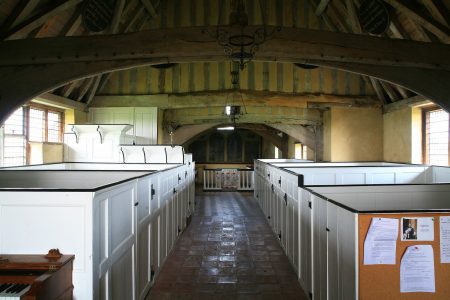
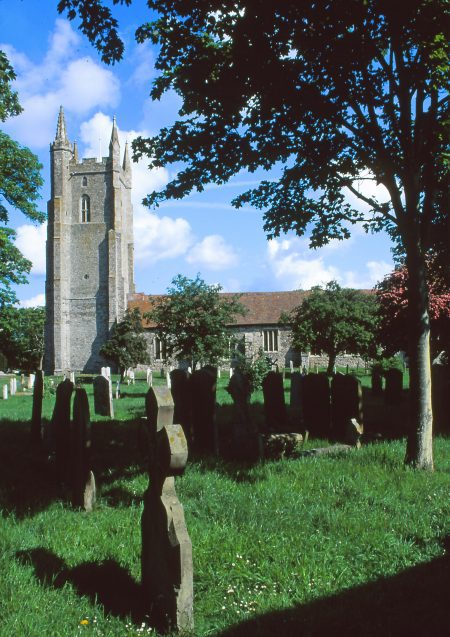
LYDD – ALL SAINTS
All Saints Church is not only Kent’s longest parish church (61m), it also has one of the tallest towers in the county (40m).
It is believed that the origins are Roman, and there is a Roman style basilica. Most of the current fabric remains medieval, despite severe damage from World War II bombing. After extensive and sympathetic renovation the building was Grade I listed.
All Saint’s has a notable historic connection with a previous rector being the prominent Catholic Thomas Wolsey. Wolsey later became a Cardinal, and rose to the post of Lord Chancellor, chief adviser to Henry VIII. His appointment as a Cardinal by Pope Leo X in 1515 gave him precedence over all other English clergy at the time.
It seems doubtful that Wolsey ever attended All Saints though, because he was responsible for many churches, usually employing curates and keeping the tithes for himself.
Wolsey’s downfall came when he failed to negotiate the annulment of Henry’s first marriage to Catherine of Aragon.
Stripped of his government titles, Wolsey retreated to York but was recalled to London on charges of treason. He died on the journey, perhaps a wise move due to Henry’s propensity to having people executed!
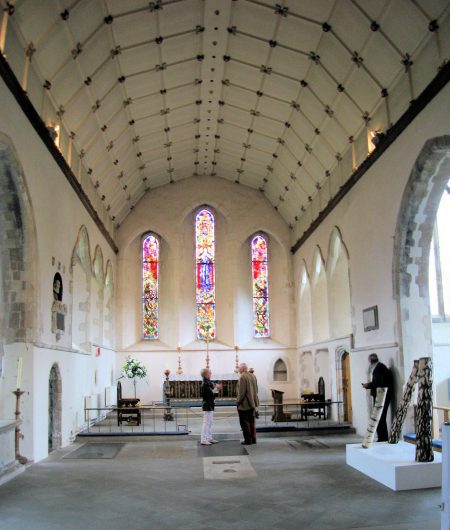
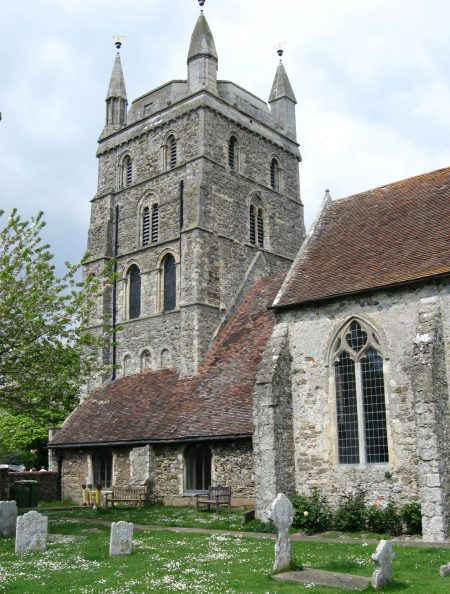
NEW ROMNEY – ST NICHOLAS
St Nicholas is the last of the five parish churches that stood in New Romney until 1543. See if you can spot the differences between the mix of 12th century Norman style and Gothic additions in the 13th and 14th centuries.
William the Conqueror’s brother Bishop Odo saw the building begin in 1086, although it mostly dates from early in the following century.
Built from stone shipped from Caen in Normandy by French stonemasons, the original construction was the nave and clerestory (a high section of wall with windows above eye level).
Until 1287 the church stood at the end of the harbour and the building was regularly filled with traders carrying out their business. Ships were moored at the edge of the churchyard with mooring points even on the church itself.
That fateful year a great storm hit New Romney, filling the area with four foot of sand and shingle. The storm was so powerful and the debris so vast that this forced the Rother estuary west to Rye. The incident must have been terrible in its destructiveness but despite the damage, St Nicholas survived.
St. Nicholas’ tower contains eight bells, the largest of which is known as the Tenor and weighs over 15cwt.
The church became Grade I listed on November 28 1950.
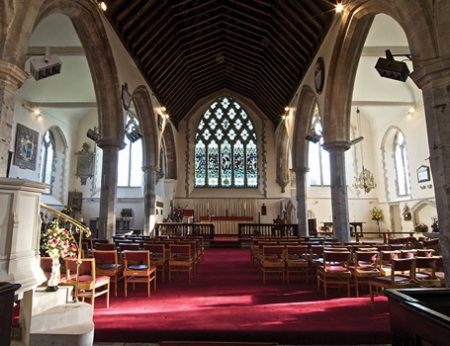
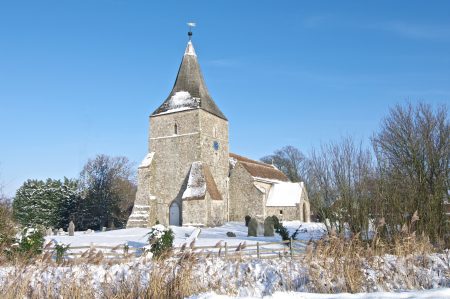
ST MARY IN THE MARSH – ST MARY THE VIRGIN
Home to the grave of Edith Nesbit, author of The Railway Children and Five Children and It, St Mary the Virgin nestles into the little village of St Mary in the Marsh, next to the 18th century Star Inn.
After the Norman Conquest, today’s stone church dates from about 1150, with the spire added in around 1450.
On the south wall of the chancel you can still see the stone seats called sedilia. In pre-Reformation times, services were long and elaborate, and these gave the deacon and sub-deacon a chance to sit down! Above the seats are two stone masks, one grinning and the other the head of a tonsured priest, made from Caen stone brought by stonemasons from Normandy via the ancient Cinque Port of New Romney.
Beside the sedilia are two circular depressions in the stone – piscinae, or basins, for the ceremonial washing of the celebrant’s hands before consecration, and the other for washing the chalice after mass.
Designed so that water used for such sacred purposes would fall into consecrated ground, both retain their original drain holes – these are extremely rare and did not appear after 1300 when the then Pope decreed that the celebrant might drink the sacramental liquid.
St Mary the Virgin’s latest addition is the oak altar and riddel posts, made by local craftsman the late Charles Link from Newchurch in 1947 from wood he had cut and seasoned himself.
Literary fans should look out for the memorial plaque commemorating Edith Nesbit inside the church. Outside her grave is marked by a wooden memorial made by her second husband Thomas Tucker.
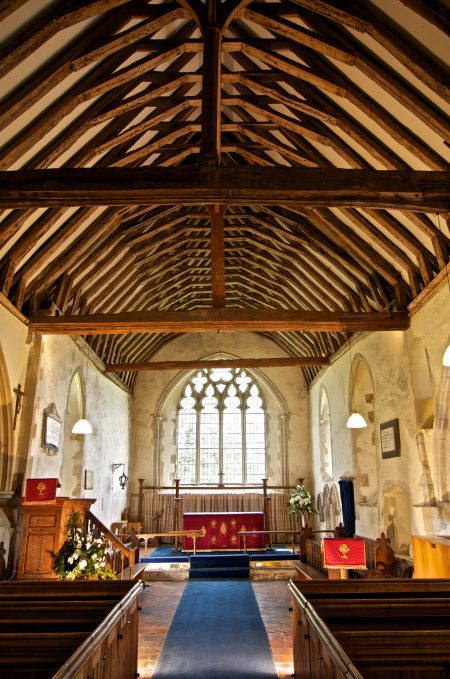
With thanks to Dr Nick Hudd and his colleagues at the Romney Marsh Historical Churches Trust.
For more information, visit www.romneymarshchurches.org.uk